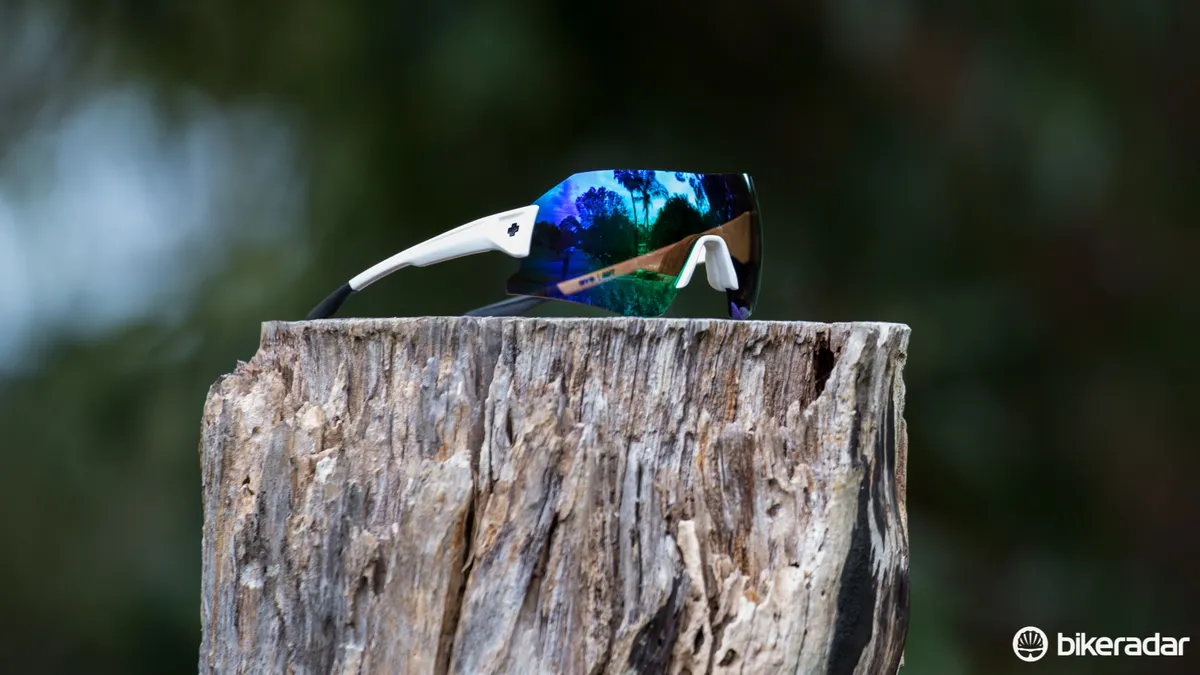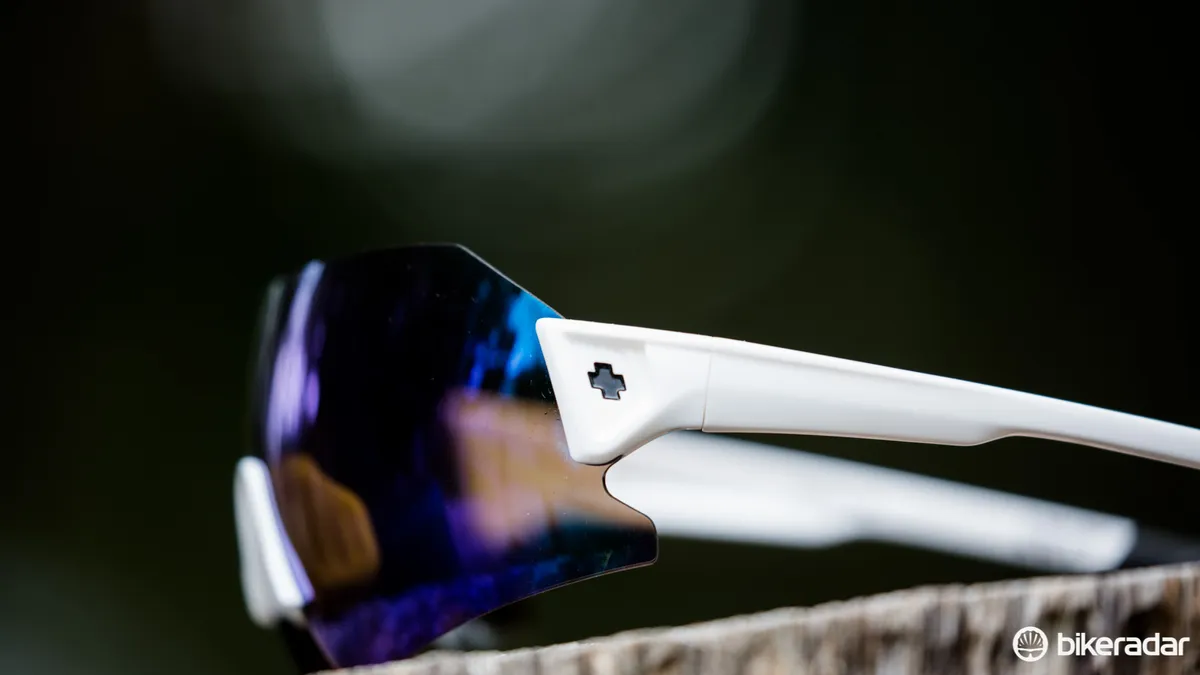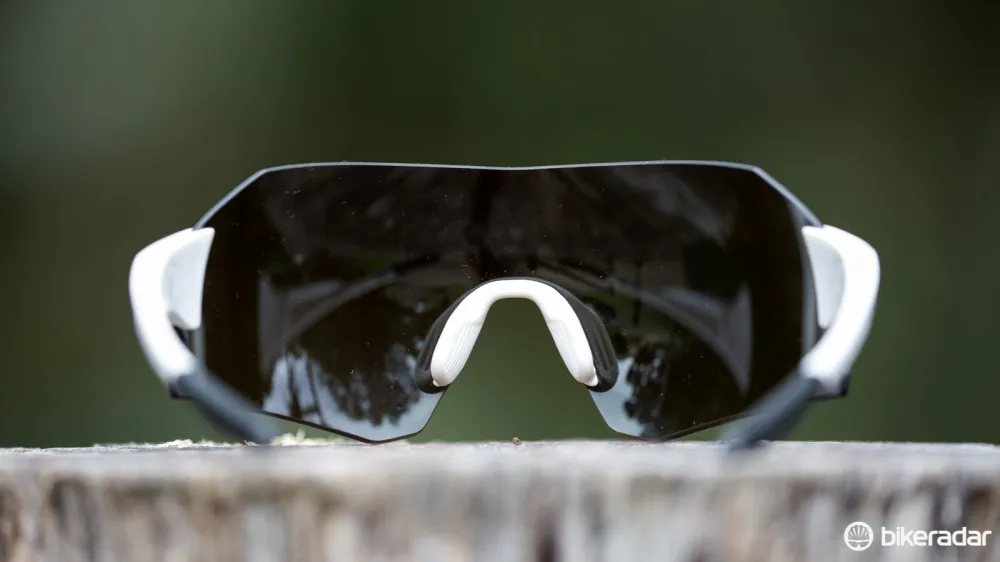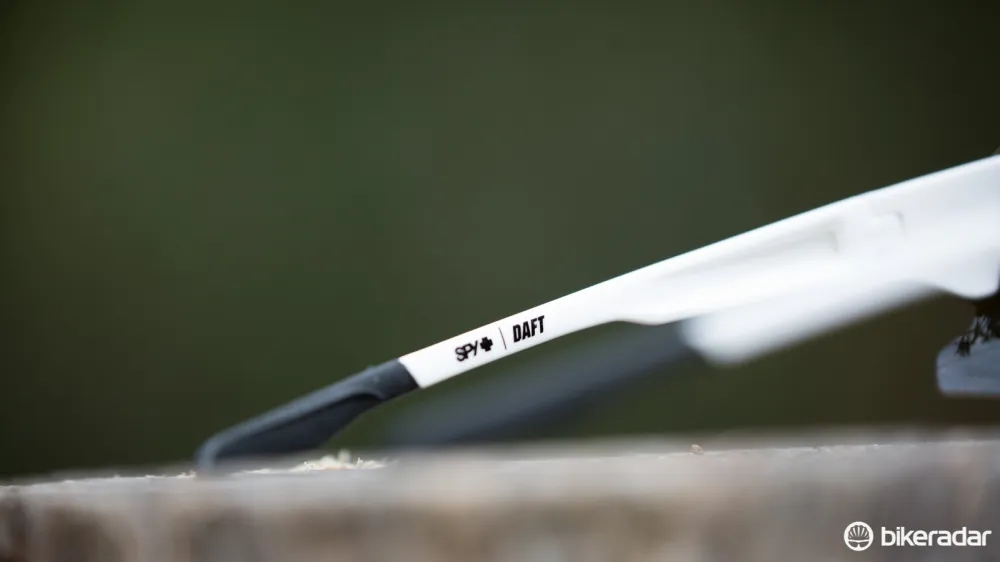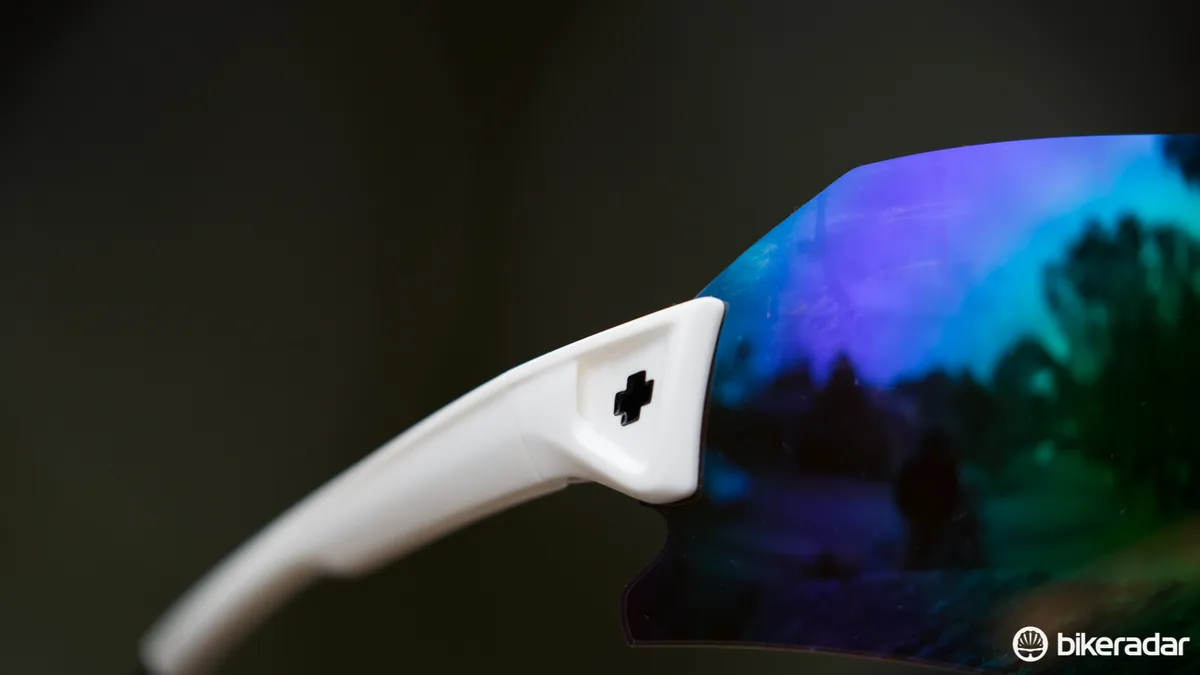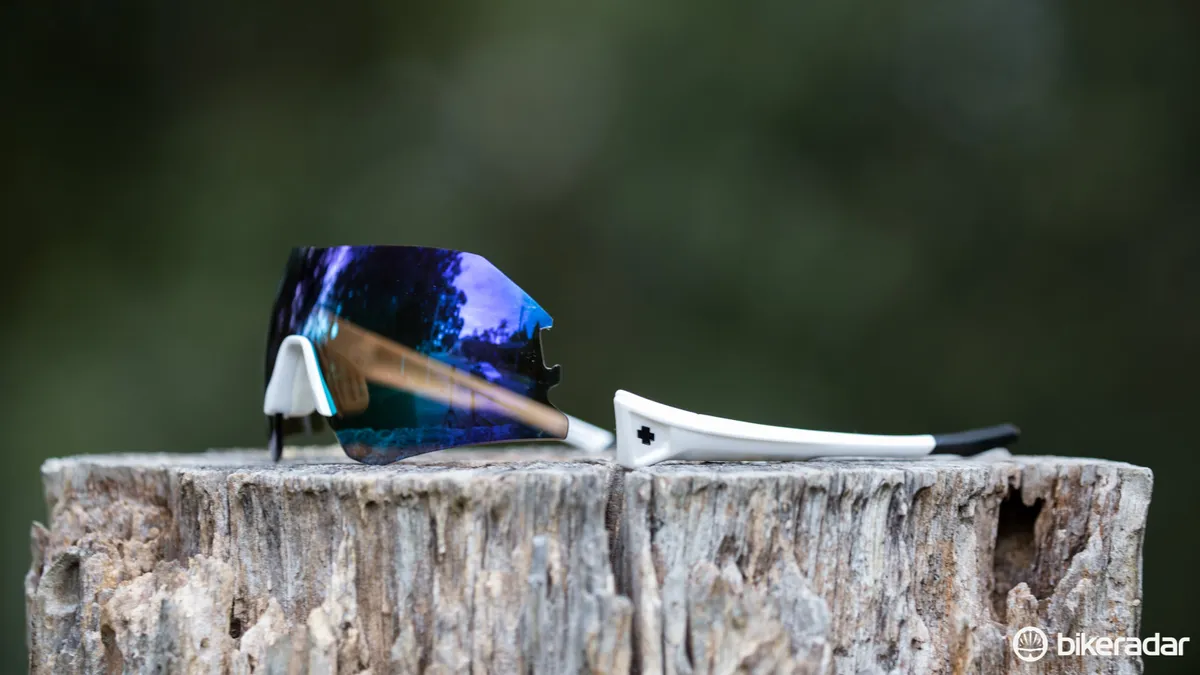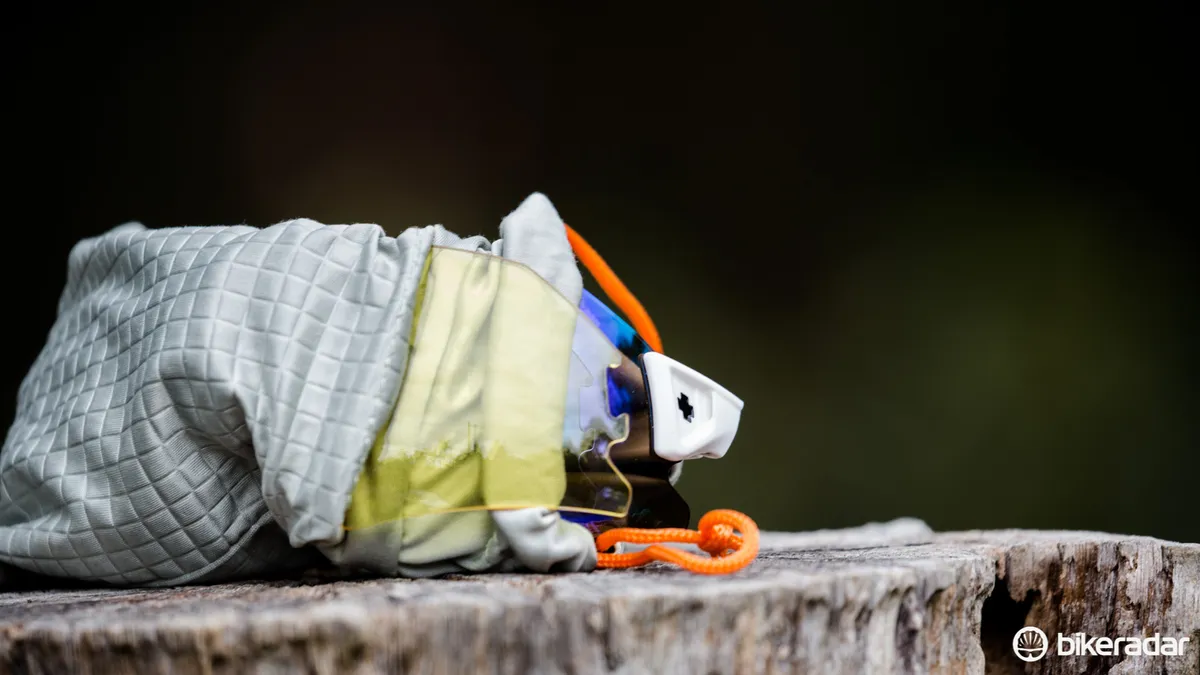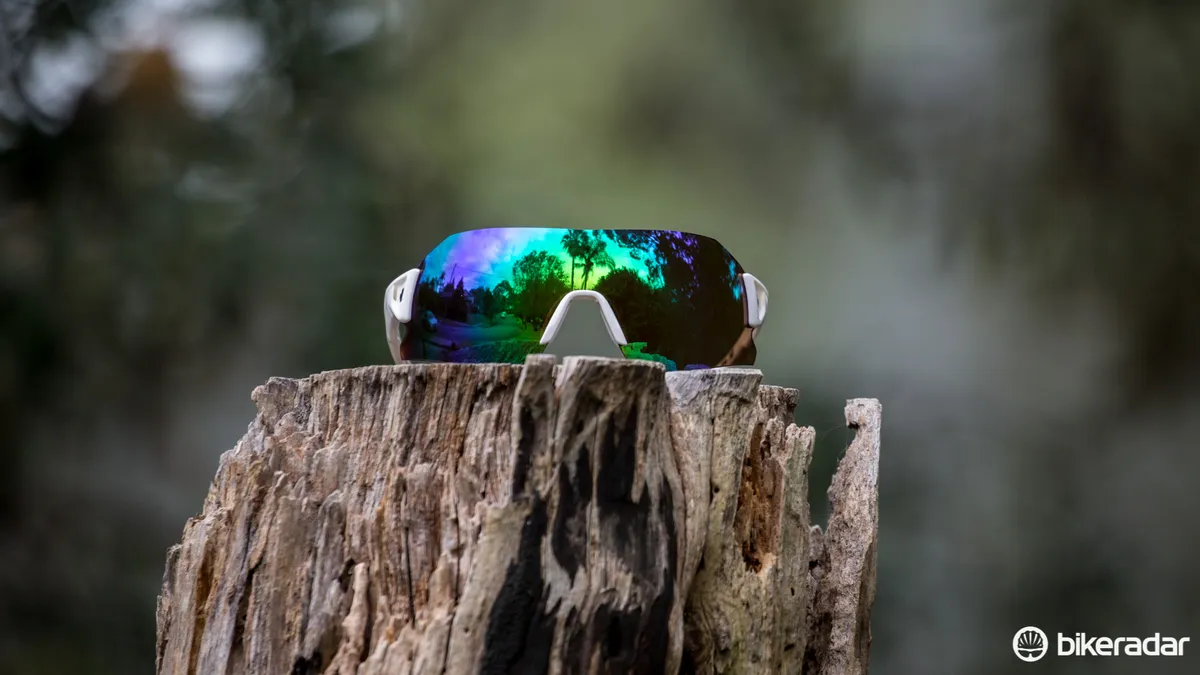Joining the likes of Oakley and Smith Optics, another American eyewear company recently entered the performance cycling sunglasses market with guns blazing. Spy Optics, traditionally a brand known for its casual sunglasses, is slowly creeping its wares onto the faces of more high-performance athletes.
We've previously tested the Screw Over and boarding on casual Cutters, both of which became popular go-tos among our testers. The new Daft is Spy’s rimless blade option – our samples came with the firm's supposedly "therapeutic" Happy Lens (more on which later).
Aesthetically similar to the Rudy Project Hypermask or the Smith PivLock V2 Max, the Daft glasses are close fitting and provide oodles of coverage. Given that the lens acts as the main structure, there's plenty of flexibility available, something that may prove to be a godsend to those who often experience glasses pinching behind the ears.
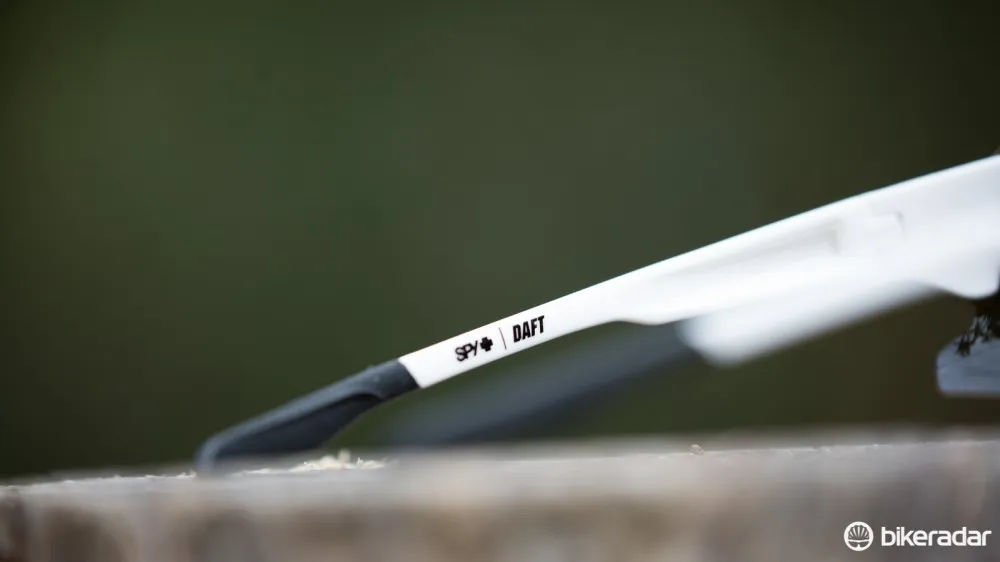
The Hytrel rubber used on the ear pads and nose piece becomes tackier once you begin to sweat
The Hytrel rubber nose piece clips into the bottom of the lens, and while it lacks adjustability, in combination with the ear pads (also made from Hytrel) hold the glasses sturdily in place. Even on an ambitious ride that took one tester over some extremely rocky singletrack aboard a 'cross bike – provoking fear that his eyeballs may rattle from their sockets – the Daft glasses stayed put.
Tipping the scales at a measly 28g, the Dafts pretty much disappear on your face. The rimless design means there's nothing to obstruct vision, and the lens is big enough that, even hunched in the drops, you’re not peering over the top.
That said, we can’t help but think that the feathery weight and flexibility makes for a cheap feel. Other high-end sunglasses from big players such as Oakley, Smith, and Rudy Project have a certain tactile density about them, that the Daft’s airy feel just doesn’t hit the same 'reassuringly expensive' mark.
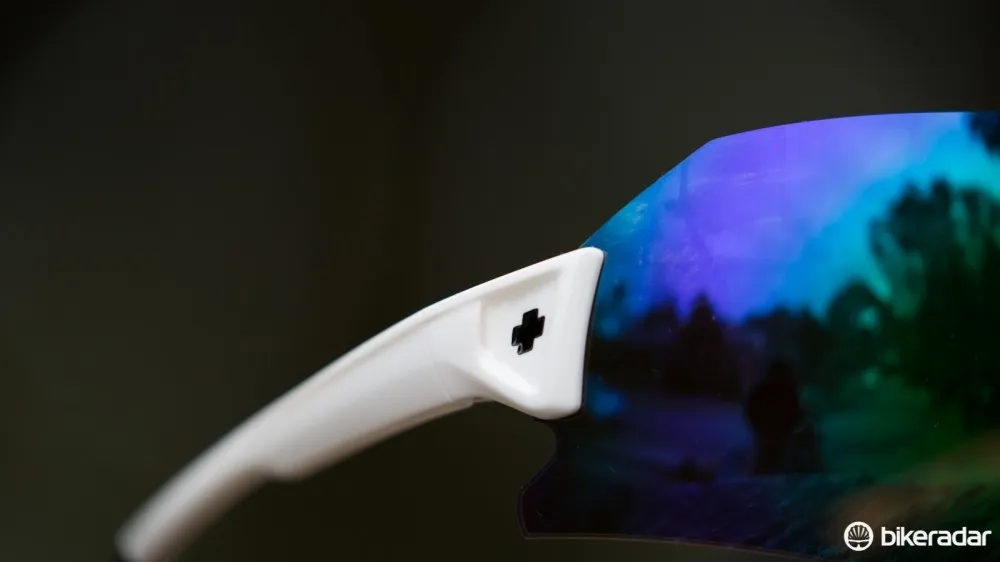
Vents on the arms get a bit of air moving behind the lens to combat fogging
We also experienced some fogging when stuck at a stop light, or while waiting for a riding buddy to take a phone call (Sorry – ed). That said, the lens stayed crystal clear on grinding slow climbs and any misting quickly disappeared once in motion.
Beyond its looks, the biggest draw card for the Daft is the aforementioned Happy Lens. A new technology released by Spy, it's claimed that the Happy Lens boosts long wave blue light, while still filtering out harmful UV rays.
You've probably heard of seasonal affective disorder or SAD, linked to low mood during the winter when exposure to sunlight, and specifically long wave blue light is limited because of the shorter days and regular cloud cover. The lack of long wave blue light can cause depression, upset circadian rhythms – and is even said to be the cause for winter hibernation in some species.
By boosting the available long wave blue light, Spy claims its Happy Lens improves mood and alertness, reduces eye fatigue, and offers superior colour and contrast enhancement.
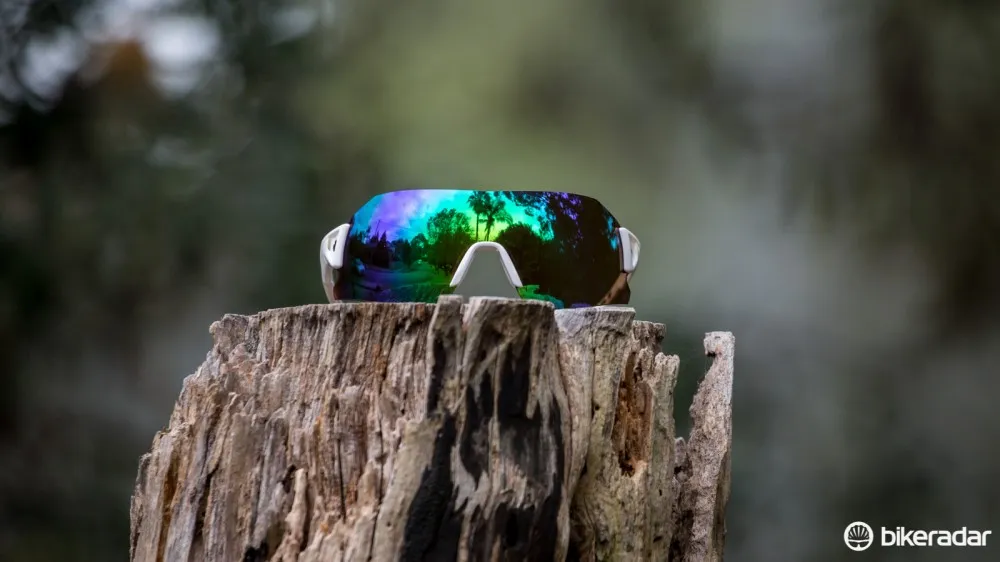
A lens that can 'make you happy': science or poppycock? The jury's still out on this one…
While we haven’t scientifically tested the claims, we can say we felt a noticeable improvement in mood while wearing the Happy Lens – even this it was just down to the richer and more pleasant hues delivered by the lenses. We had the same “ah thats better” sensation we did with Spy's Cutter glasses, which also feature Happy Lens technology.
While we would have liked to see a polarized option of the Daft, the advantage to the non-polarized Happy Lens is that is does not interfere with computer and phone screens.
With an 18.3 percent fixed light transmission, the Happy Bronze with Green Spectra lens is most definitely a full sunlight lens. For riders who have come to appreciate the adaptability of the ever popular transitions-style photochromic lenses, the Dafts will leave you in the dark.
We did notice that depending on our head angle, and the specific area we were looking the lens, there were slight differences in tint – likely due to the different spectra coating used on different areas of the lens.
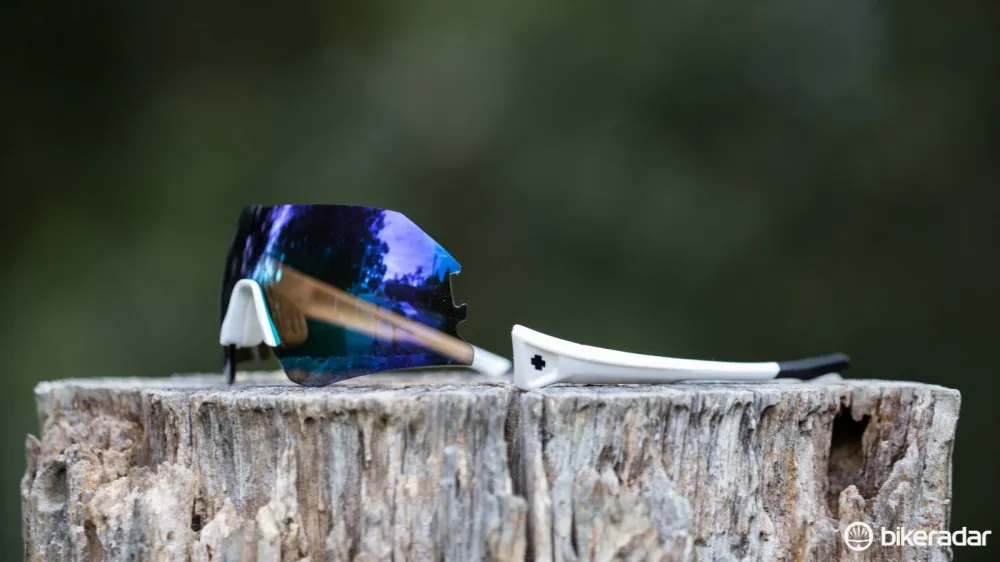
Are you actually changing the lens or are you changing the 'frame'?
In the box, the Dafts come with a microfiber bag, and an additional yellow lens for low light riding. At first the price seems high given you don’t even get a complete frame, but they remain marginally cheaper than many competing options from the likes of Oakley, Rudy Project, POC and Adidas.
Swapping the lens is as simple as popping the arms off one lens and snapping them onto the other. While the connection has remained sung through our testing, we do fear that over time it may loosen.
Aesthetically the Dafts feature some really Euro styling – combined with the limited lens choice, this means these glasses won't appeal to everyone. But all in all the Happy Lens, comfort, and unobtrusive coverage made us feel pretty OK with looking like a European pro from the early 1980s.
